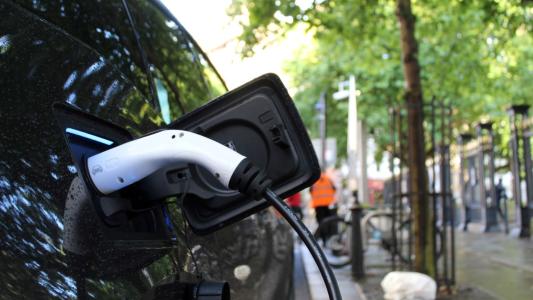As electric vehicle (EV) sales skyrocket, more than doubling in 2021 compared to 2020, and automotive companies announce massive investments in batteries and EVs, the transition from gas to electricity-powered vehicles is looking all the more inevitable.
Still, misinformation abounds during this exciting technological change. Here are seven of the biggest myths about EVs.
1. Electric cars will always be more expensive. Up front electric vehicle prices have steadily fallen since the turn of the century, to the point where they are closing in on parity with gas vehicles.
Lithium-ion battery prices have decreased 97% since 1991, and are likely to become cheaper still as labs continue to innovate the technology and mass production takes off. Some estimates from the U.S. Department of Energy and Car and Driver Magazine already suggest that – over the lifespan of the vehicle – electric cars are already cheaper than their size-matched gas counterparts when you factor in the price, maintenance, financing, repairs, the federal tax credit, and fuel costs.
General Motors just announced that its 2023 Chevrolet Bolt EV will start at a price of $26,595, and Ford CEO Jim Farley predicts that an EV price war is coming that will drive down prices precipitously.
2. Electric cars will overload the grid. There’s a notion circulating that America’s fragile and outdated power grid will never be able to handle the increase in demand from electric vehicles.
Energy experts at the nation’s top laboratories say that’s nonsense. If all of the nation’s cars and trucks were electrified, demand would rise roughly 25%, but that increase would happen gradually – over years, if not decades – granting utilities time to adapt and add supply.
An EV battery can be expected to maintain 80% or more of its capacity for at least 200,000 miles of driving.
3. EV batteries don’t last. In a recent poll, roughly 46% of prospective EV buyers thought that battery packs don’t last 65,000 miles. That perception is a gross underestimate, far below even the warranties that most companies offer on an EV’s battery.
The reality is that, based on the performance of electric cars that have been on the road for a decade, EV batteries can be expected to comfortably maintain 80% or more of its capacity for at least 200,000 miles of driving.
Concrete data from Tesla Model S vehicles suggest an initial 5% drop in capacity over the first 50,000 miles, followed by another 5% drop over the next 150,000.
4. The range of electric cars is still too small. The median range of an electric vehicle sold in the U.S. is around 240 miles. Considering that 99% of all trips are under 100 miles or so, and the average driver travels about 40 miles per day, existing EVs would easily cover almost all drivers’ daily needs.
However, with still limited charging infrastructure along U.S. highways, and considering that speeds in excess of 70 miles per hour, coupled with frigid temperatures, can cut into an EV’s range by up to 40%, multi-day road trips can still be at best inconvenient and at worst dicey.
The overall takeaway: in multiple-car households, range is no obstacle to having at least one EV.
New battery designs promise to halve charging times to under ten minutes.
5. Charging will always be too slow. Fast-charging time on EVs has rapidly come down, to the point where vehicles currently being sold can charge from 10% to 80% in just 18 minutes.
New battery designs ready to be commercialized promise to halve that charging time to under ten minutes. This reduction will make charging more convenient on long road trips.
Still, the vast majority of people can charge at home, work, or parking areas with no fast-charging required for their everyday driving needs.
6. We won’t be able to recycle EV batteries. Experts project that in about a decade or so, spent lithium batteries will start to pile up, demanding a recycling solution.
About a hundred companies are currently exploring and commercializing their own methods, so a good, economical option may be in the offing.
A tidier, less demanding route might win out, however: simply plugging used car batteries into power grid storage systems. In this application, batteries’ diminished capacity doesn’t matter, as more batteries can always be added.
When it comes to the climate, EVs top gas-powered vehicles, and it isn’t even close.
7. Electric vehicles are worse for the environment. EVs are fundamentally more efficient than gas-powered vehicles. While a gas engine only converts around 20% of gasoline’s stored energy to power at the wheels, an EV motor converts about 60% to 77% of the energy from the battery. This means that even on a coal-powered grid, EVs are better for the climate than gas cars.
Still, EV naysayers argue that when you take into account an EV’s production, including mining the materials for the battery, their advantage dissipates. This is just flat out wrong. Multiple life cycle analyses show that EVs actually have a greener supply chain, mainly because they require far fewer parts to build.
Overall, when it comes to the climate, EVs top gas-powered vehicles, and it isn’t even close.
Disclosure: The author owns various stocks tied to electric vehicles.
We’d love to hear from you! If you have a comment about this article or if you have a tip for a future Freethink story, please email us at [email protected].






